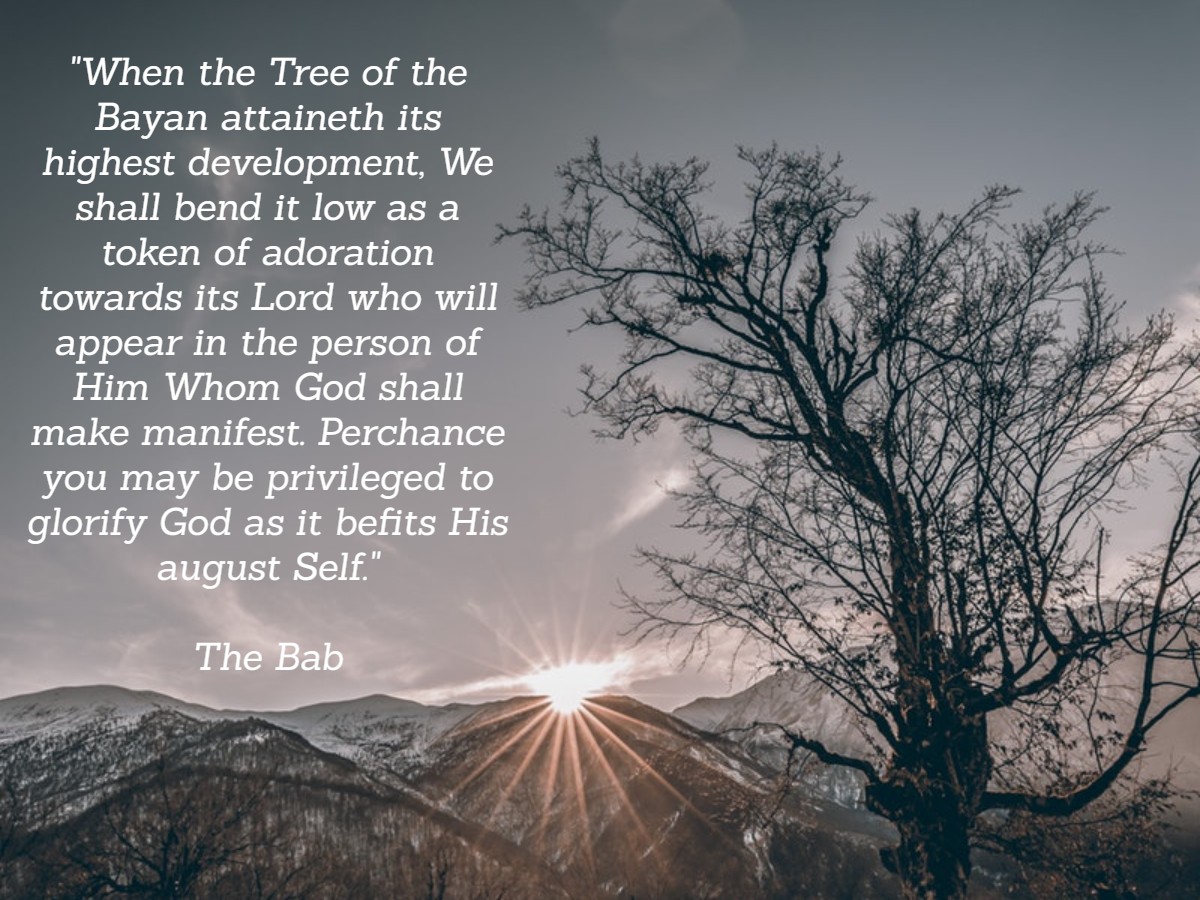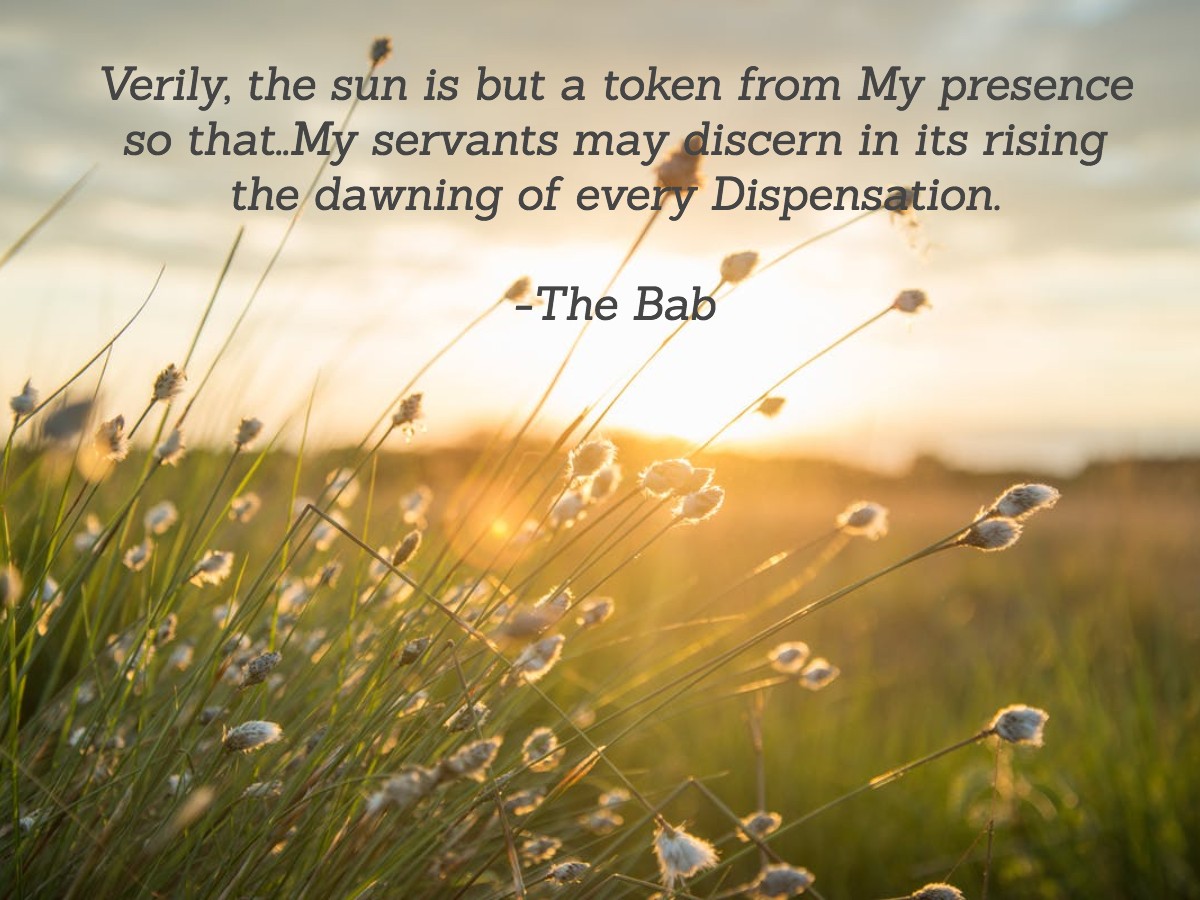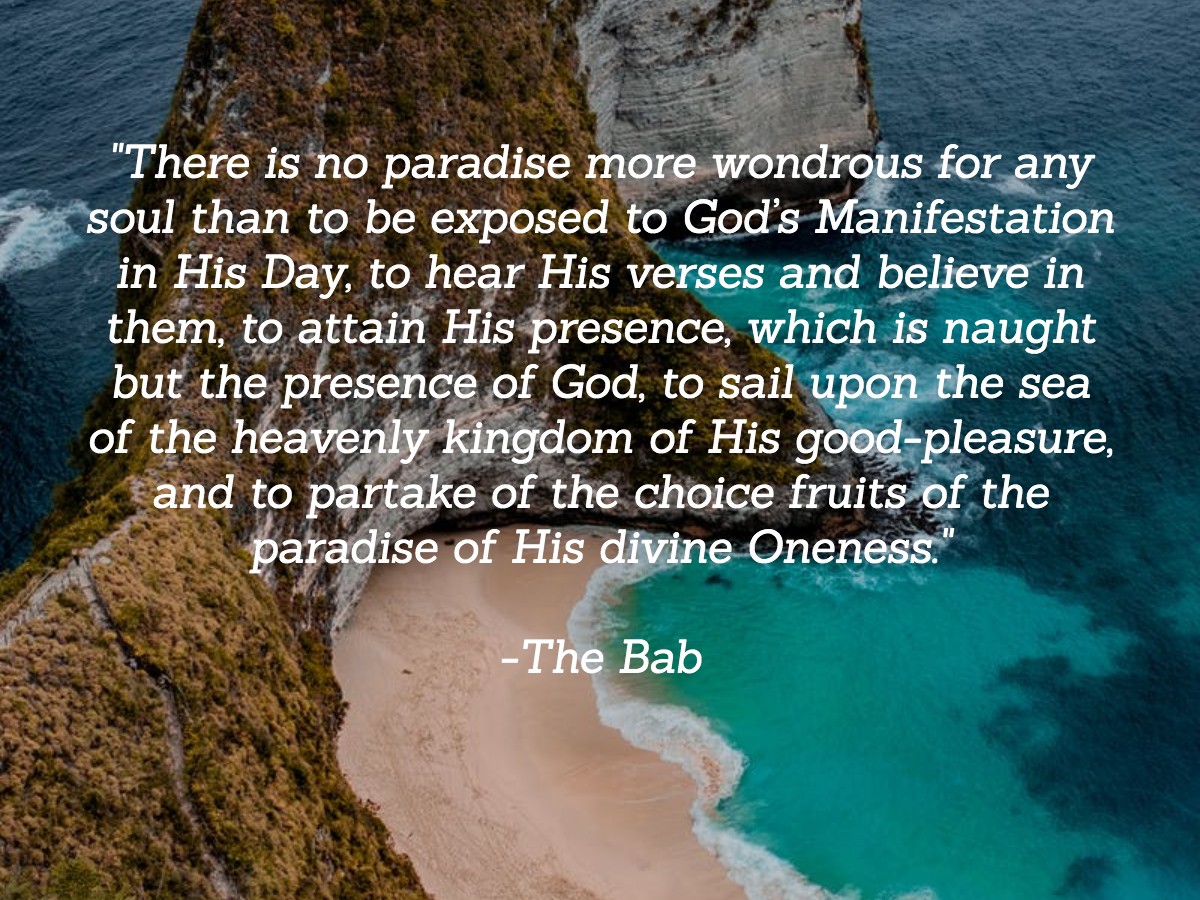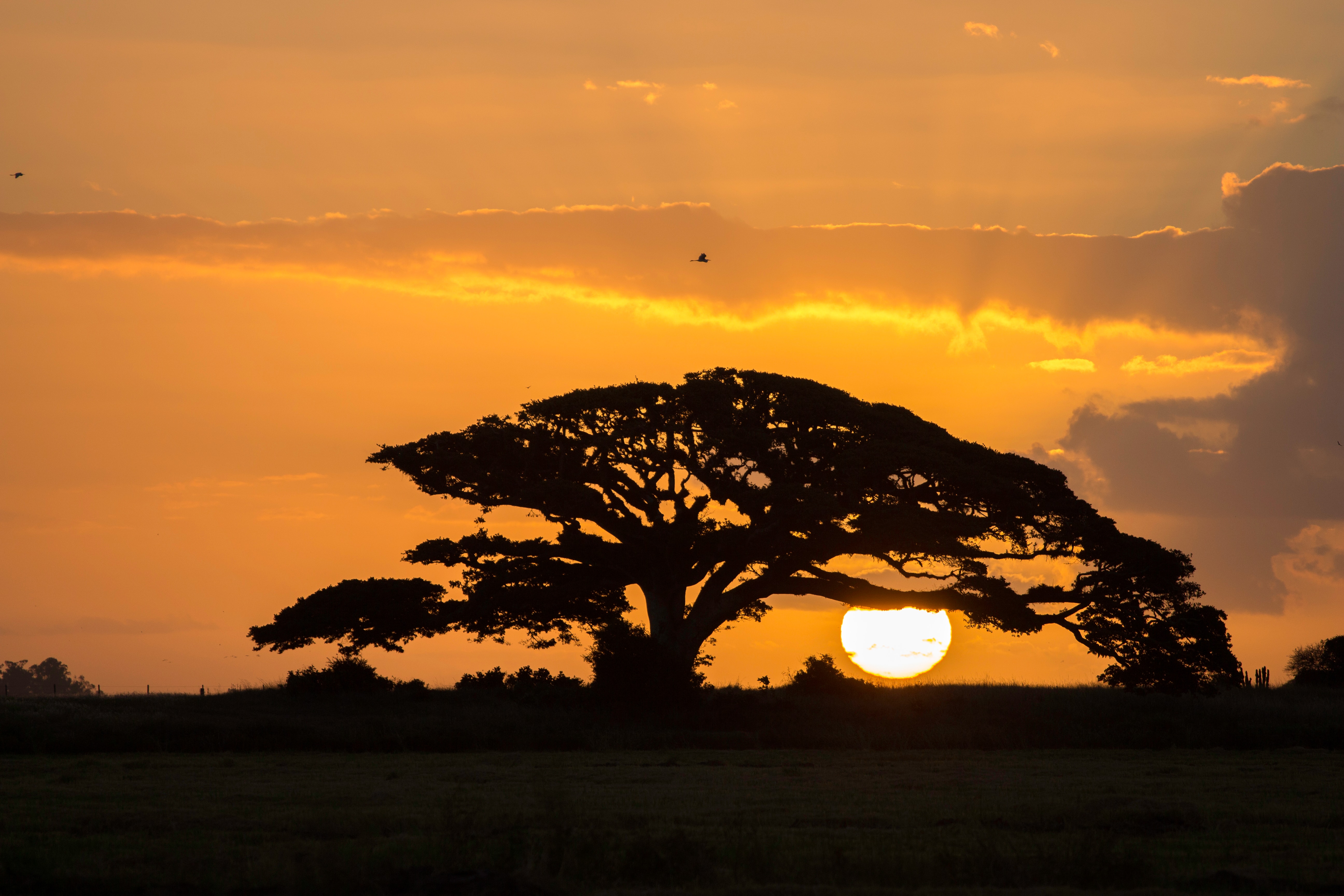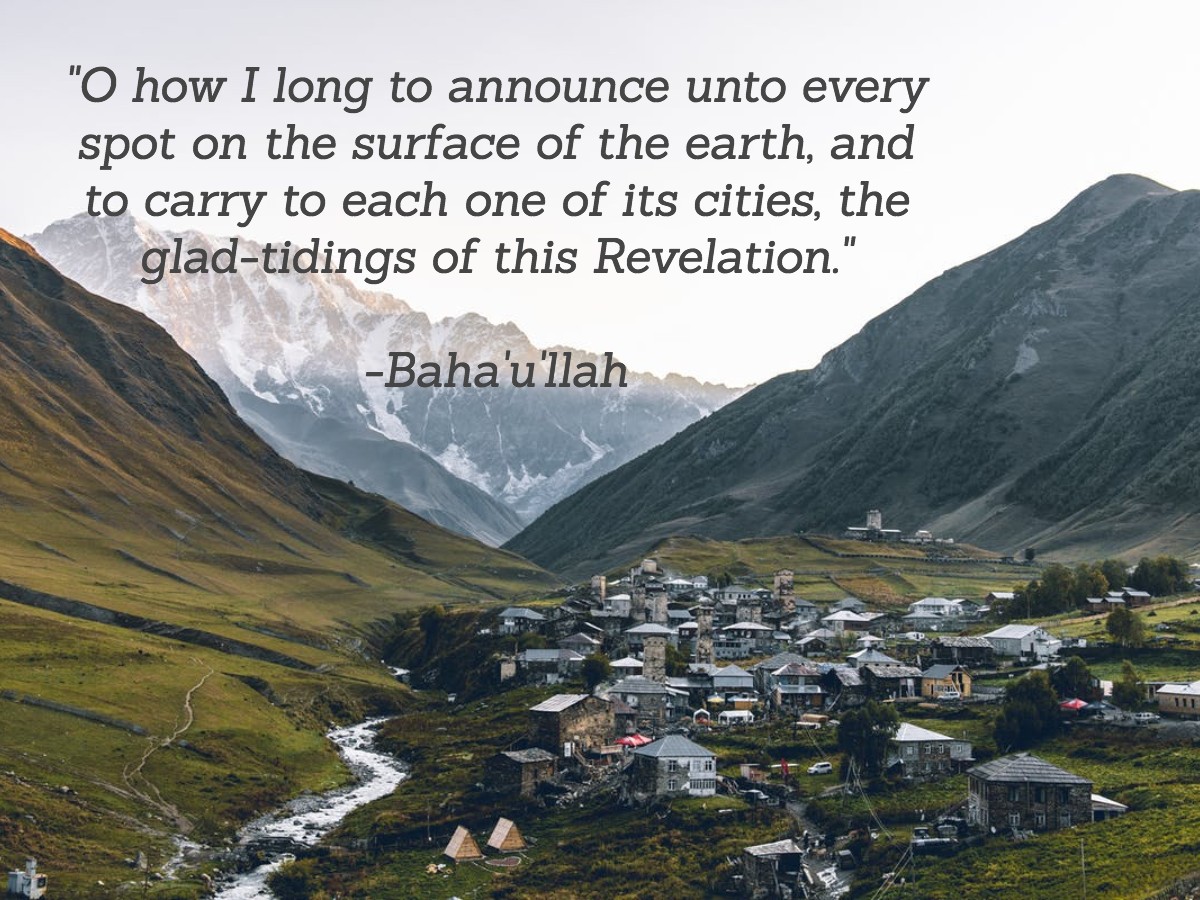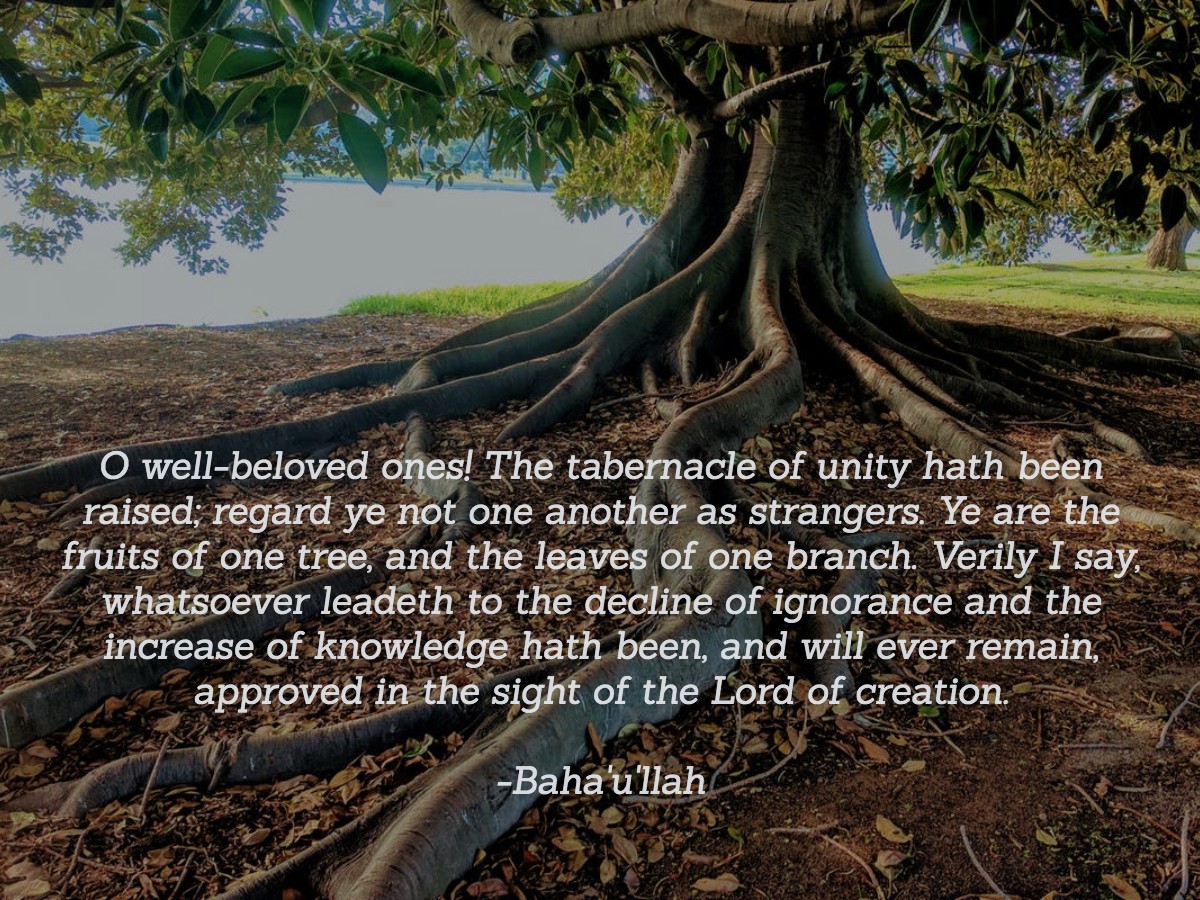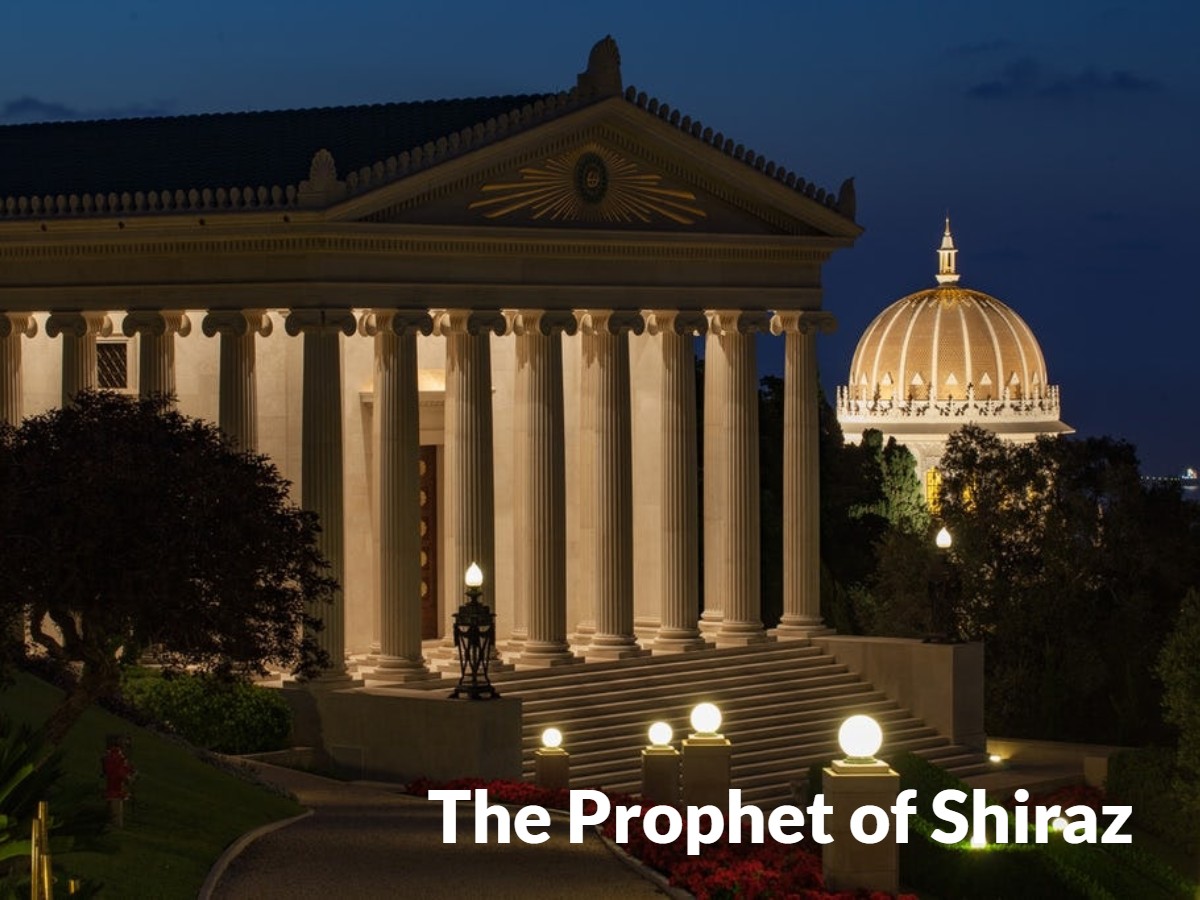The following is an essay as part of the Prophet of Shiraz series, exploring the theology of the Bab. You can find the whole series linked to the main page.
According to both the Bab and Baha’u’llah, all of us have the native capacity to recognize the beauty of God, both within us and outside of us, in nature and other people. We’ll come back later to the ways in which we can see God within the natural world- a powerful idea in both the Bab and Baha’u’llah’s Revelations. But that universal “revelation of God” is general, independent of time and place, and in a sense- passive- because it doesn’t speak to us in a specific way.
Humanity’s spiritual development however plays out in history in a specific way and is inter-related with social forces. We also don’t necessarily recognize our native spiritual capacities, or they can be swamped by other priorities. For that reason, the Bab and Baha’u’llah tell us that God speaks to us in a more specific sense, within the context of history, through His “Manifestations”- a term the Bab coined for what in other scriptures are called “prophets” or “messengers”, even “avatars”. These are individuals that “manifest” the reality of God in a specific sense. The Bab’s writings will explain that that kind of “Revelation” is just as natural as the more general “revelation” all of us experience. (For the purposes of these essays, a “Revelation” with a big “R” refers to the Revelations that come through the Founders of the great religions of humankind, whereas the more general “revelation” with a little “r” refers to the truth that all things in their innermost essence reflect the qualities of God.)
In all the great religions of the past, a primary issue that occupied the attention of their early followers is the nature of the Founder of their faith in relationship to God and other elements of their metaphysical universe. This is a major element of Christian history, in which the early leaders of the church strove to understand Christ’s relationship to God based on His statements in the Gospels. In some instances, Jesus made a distinction between Himself and God- “My Father, who art in Heaven”, and at other times He explicitly identified Himself with God- “I and the Father are one”. These seemingly contradictory statements perplexed the early Christian community and ultimately led to different interpretations of who Christ was. Some believed that Christ instantiated the “Essence” of God, while others believed He was related to the Essence but not formally God Himself. A famous gathering of the early bishops of the church at the First Council of Nicea in 325AD canonized the official “creed” of the early church- that Jesus was the “Son” begotten by the “Father” through the action of the “Holy Spirit”- a creed now known as the Trinity. Early Christian theology generally leaned towards Christ representing the essence of God, basically an incarnation of God into a human being.
.
Muhammad was more clear in the Quran about His station. He was the “Prophet”, the “Messenger”, who brought the Quran, but the Voice in the Quran was God Himself- even though the words were spoken by Muhammad. Early Muslims even made a distinction between words that Muhammad spoke from his own human perspective, and those He revealed in the Quran. This relationship is reflected in the Quran itself- with verses starting with “Say:”, as if God is telling Muhammad to recite. The pronoun “We”- “the royal We”- is also used as the first person for God in the Quran, in order to make it clear that God is speaking- “And as for those who strive in our path, We will surely guide them in Our ways” (Quran 29:70)
The Quran also “corrects” the Christian interpretation of Christ’s divinity, stating that it was improper to consider God having had a son in any literal sense, let alone “incarnating” God in human form- “Say: God is One, the Eternal God. He begot none, nor was He begotten. None is equal to Him.” (Quran 112:1-4) In the Islamic Revelation, Christ, like Muhammad, was considered a Messenger of God and clearly subservient to God’s essence, which was separate from the Messengers of God.
Another key concept in Islam is the “Unity of God”. To refer to God as “one” was misleading, as God was beyond numbers, thus it was more appropriate to talk about his “unity” than his “oneness”. To uphold the “unity of God” meant to not put anything up as a “partner” with God (“to join partners with God”)- and worship Him alone. This made Islam a universal religion in which all previous “Messengers” were sent by the same One God, whose reality was reflected in all that exists. There is much discussion in Islamic theology of what it truly means to uphold the “unity of God” in one’s beliefs.
In the revelation of the Bab, we have a very unique situation. The Bab Himself was a Manifestation of God, but He also was tasked with preparing the way for Baha’u’llah’s revelation. Whereas in the past, the followers often had to try and piece together the nature of their Founder after He had left the earth, the Bab explains in great detail the relationship of Baha’u’llah to God before His Revelation. Indeed, it could be said that explaining the nature of Divine Revelation was His primary mission. But it wasn’t a theoretical issue, as Baha’u’llah would come within the lifetime of the generation the Bab was addressing, something the Bab Himself clearly states- “But for the sole reason of His being present amongst this people, We would have neither prescribed any law nor laid down any prohibition.” Indeed, the Bab uses His own Revelation, as well as many references to Baha’u’llah as “Him Whom God Shall Make Manifest” as examples of the relationship of humans to God and His Manifestations.
It’s worth reviewing a passage of the Bab that expresses some key concepts. The following passage of the Bab- explicitly revealed in answer to a general theological question- succinctly expresses His main teaching. It also reflects the beauty and illustrative nature of His language. If these Writings are new to you, it will undoubtedly seem complex to you on first reading but we will parse it out so it is clear-
“Thou hast asked concerning the fundamentals of religion and its ordinances: Know thou that first and foremost in religion is the knowledge of God. This attaineth its consummation in the recognition of His divine unity, which in turn reacheth its fulfilment in acclaiming that His hallowed and exalted Sanctuary, the Seat of His transcendent majesty, is sanctified from all attributes. And know thou that in this world of being the knowledge of God can never be attained save through the knowledge of Him Who is the Dayspring of divine Reality.”
First, the Bab states the question that he was asked- about the fundamentals of religion. Then, he states something that is obvious on its surface- that “first and foremost in religion is the knowledge of God”. But what does it mean to know God?
He goes on to answer that question but first upholds the concept of God’s “divine unity”, further stating that understanding the concept of divine unity “reaches its fulfillment” in recognizing that God is unknowable- “sanctified above all attributes”- meaning above all human attributes, or indeed any attribute that humans could conceive. This is an evolution on the traditional Islamic concept in which God is beyond numbers. In the Bab’s theology, God is not even describable by any attribute at all- completely outside of our capacity to know in a direct sense.
He then concludes with His primary teaching- that in this “world of being”, meaning the world you and I live in, “knowledge of God” can only be knowledge of “Him Who is the Dayspring of Divine Reality”.
So religion all comes down to knowing the “Dayspring of Divine Reality”- but what’s that??
The “Dayspring of Divine Reality” is one of the many beautiful and descriptive terms that Bab uses for the essence of the Prophets and Messengers of God- Jesus, Muhammad, and of course Baha’u’llah- the hero of the Bab’s Writings.
In this short passage, the Bab has stated the essential teaching of His revelation- that God, the actual God, the “essence’ of God- is not something humans can know. Our experience of God is limited to how He manifests Himself to us- and the primary “manifestation” of God to us is the Revelations of God that form the major religions of humankind.
Those are the “Daysprings of Divine Reality”. But what’s a “Dayspring”?
“Dayspring’ is an older English word that goes back to the King James Bible, and it meant the place on the horizon where the sun rises. So, the “dayspring” is the place on the earth where God- “the Sun”- manifests himself to humanity. That is, in the form of a prophet or messenger of God. But notice that the Bab no longer refers to them as “prophets” or ‘messengers” but more literally as something that represents God on earth, something that is God to us, even though its not God in essence. We will see that the Bab frequently uses the analogy of the sun to explain the relationship of the Manifestations of God to humanity. (We will also see that it is a very powerful analogy!)
The Bab will go on to say in other passages that, since the essence of God is unknowable, recognizing the “unity of God” means to recognize the “unity” of his Manifestations, as that is the path through which we get to know God in this “world of being”. All the revelations of God- in abstract form- are one Reality- and recognizing them as one Reality- is the true meaning of appreciating “divine unity”.
With that, the Bab takes an abstract God, completely beyond human understanding to know, and brings him down to the practical experience of humanity- that religion itself- the historical revelations of God- are our experience of God, the most we can possibly know. And to see them all as One is the highest degree of spiritual understanding.
So, the Christian concept that Christ was God is true in the sense that Christ was the expression of God’s Will to humanity, and, for all intents and purposes, “God” to us. The Islamic understanding was also true in that neither Christ nor Muhammad represented the Essence of God, which is unknowable to humans.
Pretty neat. 2000 years of theological controversy resolved in one short paragraph!
One final point-subtle but important- to tie this into the intellectual and scientific developments in Europe at the same time in history. The scientific conclusions of Darwin and other naturalists were that humans were not the absolute center of the universe, that there was a vast universe out there, with other planets, and an ancient biological life story that went back eons. This made humans feel small and lost in a cold, heartless and meaningless universe that seemed to not really care if we existed or not.
The Bab’s theological evolution is subtle but very important. God exists and is real, but our concepts of God are relative to us, to our view of the world, and even to our time in history- based on our capacity at that time. The Manifestations of God are humans. They speak our languages, express themselves in ways we easily understand, live among us, suffer and die.
But at the same time they represent God to us, in a manner we can understand. As the Bab says in one passage, God manifests Himself “to His creation through his Creation”.
Yes, we do live in a vast universe with an infinite variety of life, but God still wants us, puny as we are, to make spiritual progress, so He reveals His message to us in a way we can understand. By putting the emphasis on the Revelations of God as our primary experience of God, the Bab is validating our experience and helping us to again feel at home in the universe.

